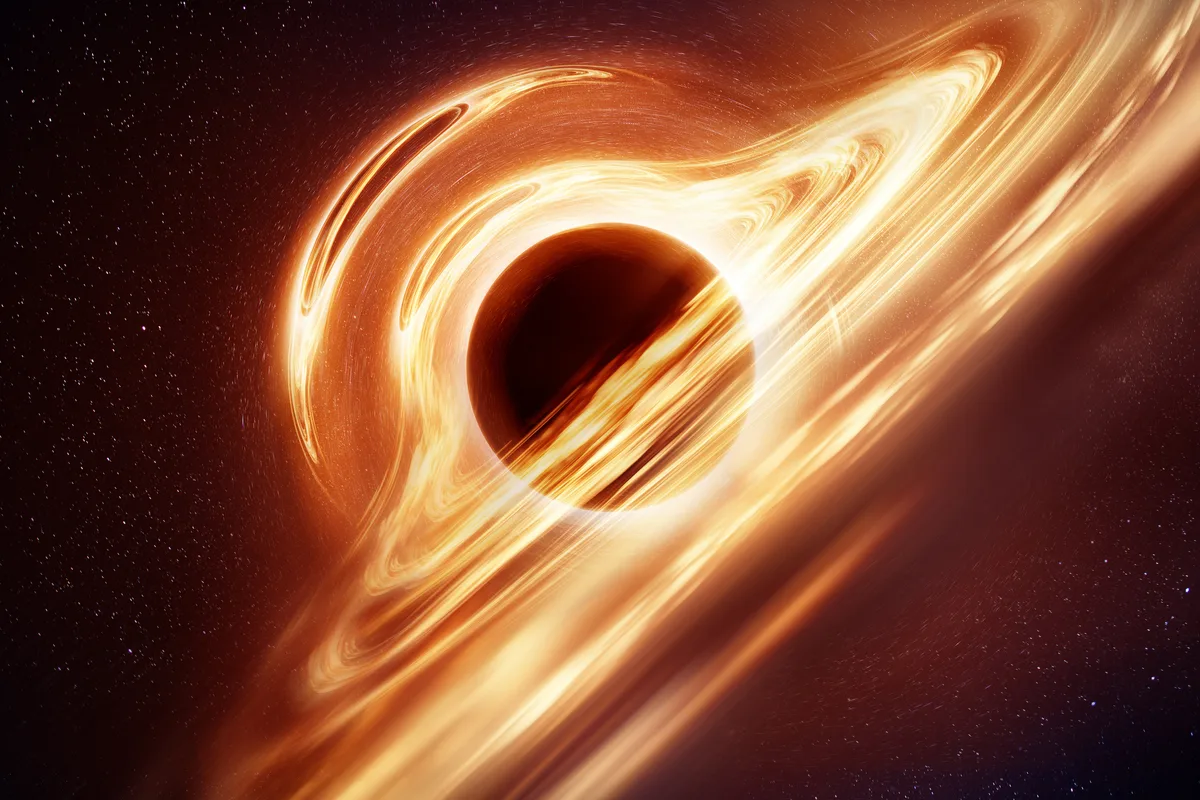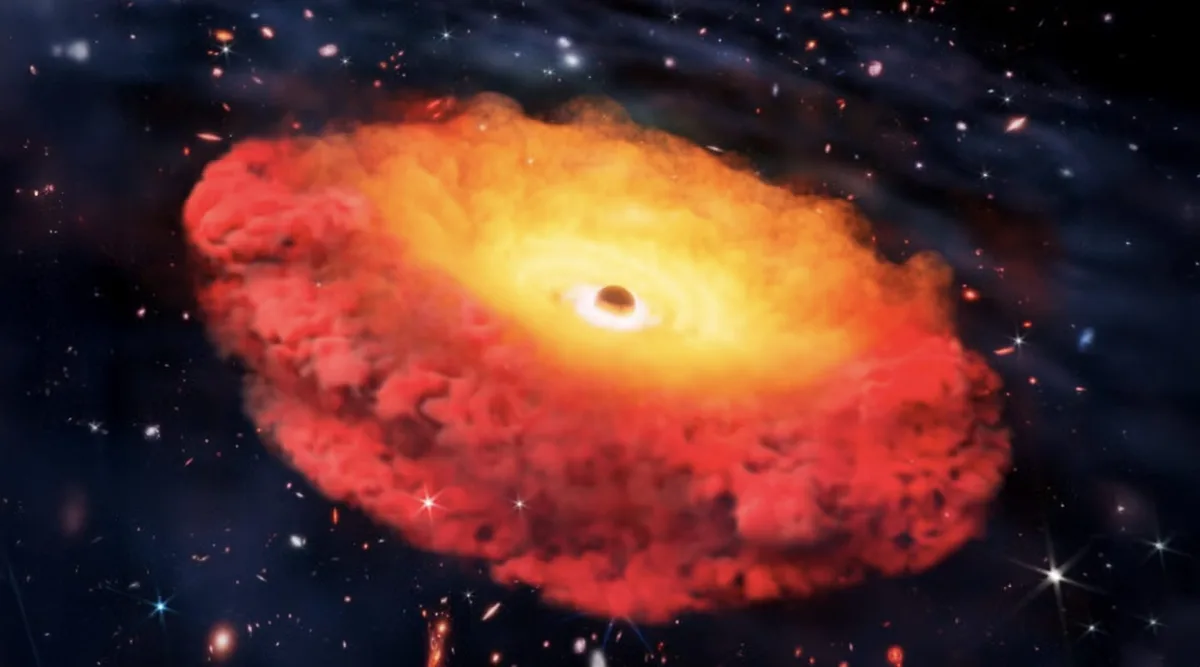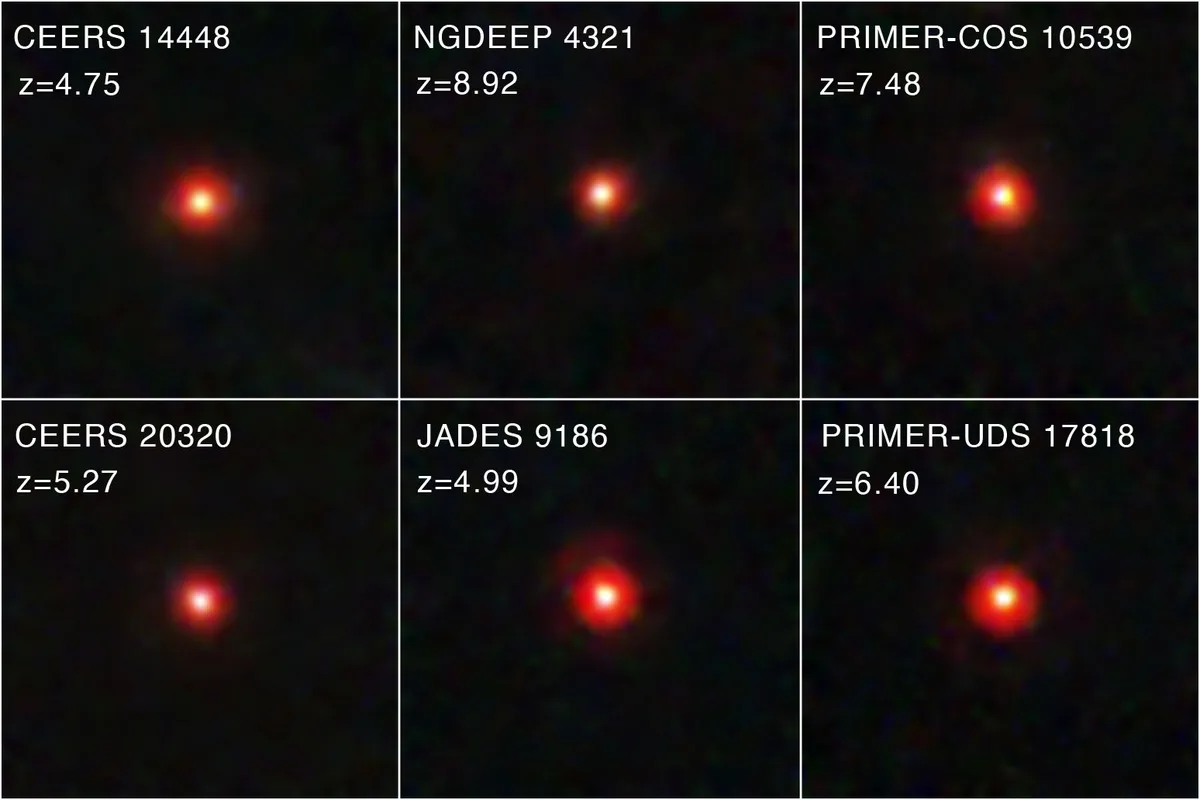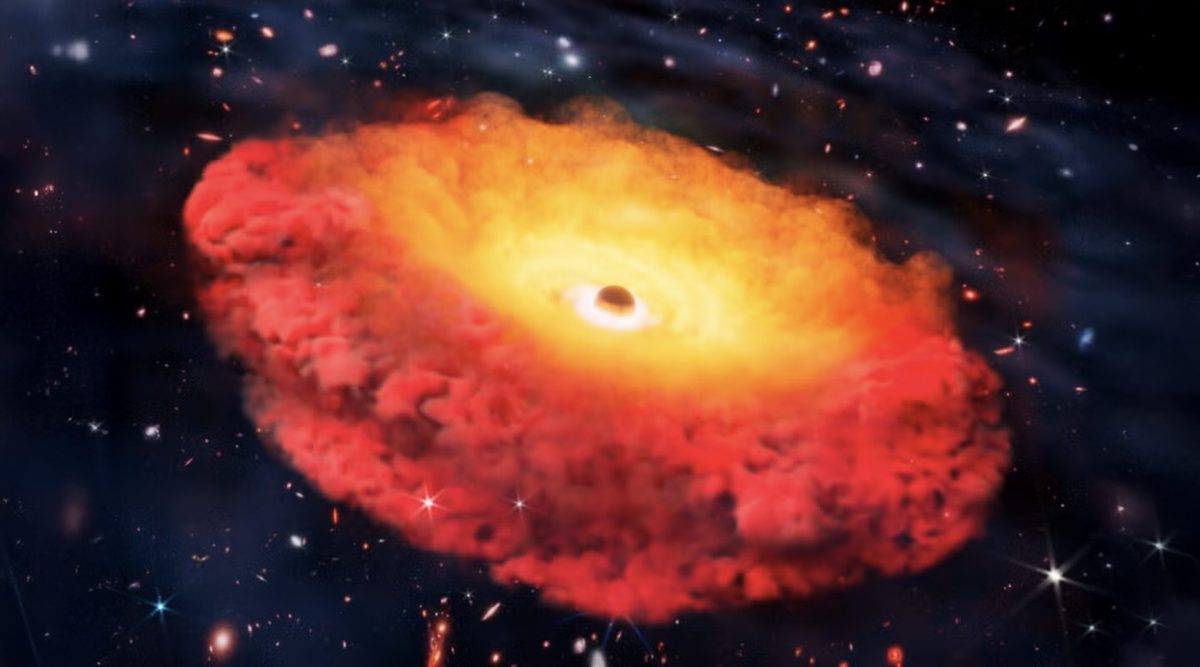A supermassive black hole has been discovered that formed when the Universe was just 3% of its current age.
That’s around 500 million years after the Big Bang, or 13.3 billion years ago.
 Credit: solarseven / Getty Images
Credit: solarseven / Getty Images
Found in the centre of a galaxy known as CAPERS-LRD-z9, it’s the most distant black hole ever confirmed and a rare glimpse into the cosmic dawn.
 Artist’s impression of CAPERS-LRD-z9, home to the earliest confirmed black hole. Credit: Erik Zumalt, The University of Texas at Austin
Artist’s impression of CAPERS-LRD-z9, home to the earliest confirmed black hole. Credit: Erik Zumalt, The University of Texas at Austin
Finding the black hole
The black hole was spotted by an international team of astronomers led by the Cosmic Frontier Center at the University of Texas at Austin, using data from the James Webb Space Telescope.
“When looking for black holes, this is about as far back as you can practically go,” says Anthony Taylor, a postdoctoral researcher at the centre.
“We’re really pushing the boundaries of what current technology can detect.”
The team used spectroscopy to split the light from CAPERS-LRD-z9 into its component wavelengths and study the object’s characteristics.
This revealed a broad hydrogen emission line, a telltale sign of gas circling a black hole and falling into the gravity well in its centre.
As the fast-moving gas is pulled into this singularity, the wavelength of its light is stretched to much redder wavelengths.
As Taylor explains, “There aren’t many other things that create this signature. And this galaxy has it!”
Unusually enormous
 Little red dots (LRDs) seen by the James Webb Space Telescope. Credit: NASA, ESA, CSA, STScI, Dale Kocevski (Colby College)
Little red dots (LRDs) seen by the James Webb Space Telescope. Credit: NASA, ESA, CSA, STScI, Dale Kocevski (Colby College)
Not only that, but this black hole is a monster, estimated to be up to 300 million times the mass of our Sun, unusual for such an early epoch.
Its host galaxy CAPERS-LRD-z9 belongs to a newly identifed class of galaxies know as little red dots, which are very compact, red and unexpectedly bright.
These seem to have only been present in the first 1.5 billion years of the Universe and are unlike anything ever seen before.
“The discovery of little red dots was a major surprise from early JWST data, as they looked nothing like galaxies seen with the Hubble Space Telescope,” explains Steven Finkelstein, a co-author on the study.
“Now, we’re in the process of figuring out what they’re like and how they came to be.”
The team hopes to gather higher-resolution JWST observations.
“This is a good test object for us,” says Taylor. “We haven’t been able to study early black hole evolution until recently, and we’re excited to see what we can learn from this unique object.”
This news story appeared in the October 2025 issue of BBC Sky at Night Magazine

